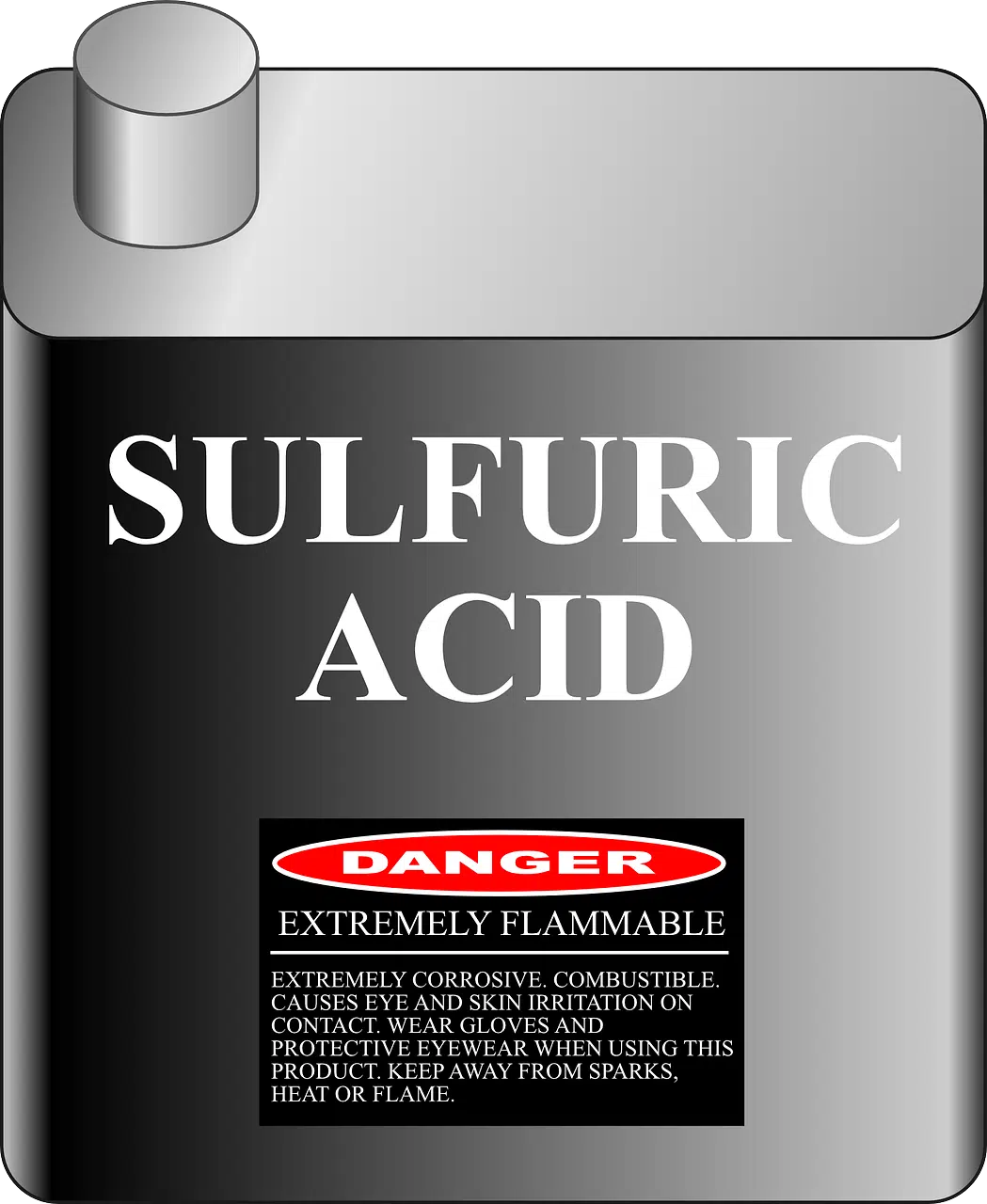
Sulfuric acid is an extremely toxic, irritating, dangerous and polluting substance, so you have to work with it carefully, know how to apply it safely and get advice on how to dispose of it correctly.
Sulfuric acid is the name that identifies a chemical compound that arises from sulfur dioxide (SO2) . This resource, with the chemical formula (H2SO4) , is used to synthesize various materials and has multiple applications at an industrial level. It should be noted that sulfur dioxide (SO2) is essential to manufacture sulfuric acid .
When handling, applying and/or storing this product, extreme care must be taken because inhalation is dangerous due to the damage it causes to the throat and nose areas, putting breathing at risk. The same in case of exposing the skin and different parts of the body (such as the eyes, for example) to this compound that causes a high level of corrosion .
Irritation, dehydration, dermatitis, tissue destruction y burns son algunos de los problemas que puede llegar a generar de acuerdo a la frecuencia de exposición y a la concentration involucrada en el incidente.
Properties of sulfuric acid
Before listing the properties of sulfuric acid , which is present in a liquid state, lacks color, gives off a very special smell and has an oily consistency, it is interesting to note that its molecule is made up of sulfur , oxygen and hydrogen .
In a context of high temperature, it usually causes vapors that are characterized by their considerable toxicity . In relation to water, it should never be added to the acid but the other way around (and with great caution), since this combination triggers a lot of heat, a scenario that can lead to splashes, explosions or fires.
It also stands out for being a good conductor of electricity . This powerful oxidant manages to react with metals such as aluminum and ends up decomposing salts made up of different acids.
Synthesis and production
The synthesis and production of sulfuric acid requires multiple procedures and techniques.
In this framework it is useful to mention that, throughout history, the so-called contact process has been implemented (which is carried out through the use of a catalyst ). Another alternative is the lead chamber method (the most used for the manufacture of fertilizers ), and the benefits of both the double absorption process and the double contact process should not be overlooked.
The use and treatment of sulfur in the sulfuric acid production process involves three stages. The first involves the generation of sulfur dioxide , which is then oxidized and sulfur trioxide (SO3) is produced. In the final stage, the sulfur oxide is converted to sulfuric acid .

The so-called butter or sulfurized paper is of vegetable origin and is treated chemically by applying a sulfuric acid bath.
Another point to consider is the neutralization of bases , since being a strong acid , the aforementioned sulfuric acid needs a strong base in this phenomenon.
Applications of sulfuric acid
The field of use of sulfuric acid is enormous and varied, thus recognizing applications of this chemical compound in a lot of areas. Beyond the current panorama, it must be recognized that technology and research are allowing the creation of alternatives and the presentation of modern nanomaterials with the intention of replacing sulfuric acid .
Until now it is essential, for example, in the development of inorganic fertilizers since it enables the production of phosphoric acid (H3PO4) , a chemical that is activated with water, which is why it is not advisable to use this substance to clean or eliminate it.
It is even considered as an essential input for the oil refining sector, as well as in activities aimed at recovering metals, a process known as acid leaching is carried out.
It is also a valuable resource for the petrochemical industry , while in areas where gaseous oxygen and gaseous hydrogen are sought, the best alternative is to carry out electrolysis of dilute sulfuric acid . This process is used, to indicate a specific reference, by the electroplating technique.
Reviewing many other tasks and productive activities that employ a huge number of people and constitute very profitable businesses, other practical applications of sulfuric acid come to light.
The production of acid dyes also gives prominence to this substance, which is also key in the production of hydrochloric acid (HCI) and other pigments .

Sulfuric acid plays an important role in the manufacturing processes of pigments, fertilizers and dyes, among other products.
The use of the characteristics of this element extends to the production of lead-acid batteries . It is a wet battery typical of traditional vehicles, although in several electric vehicle models it is implemented as a traction battery .
By deepening knowledge about the presence of sulfuric acid in the creation processes of multiple everyday objects on a global scale, its uses in the processes of paper production , plastic production , cellophane production and detergent production will come to light. , to list options that are easy to recognize popularly.
Before concluding this article, it is necessary to point out that this dangerous compound that requires careful handling is an unavoidable ingredient for the production of explosives .
